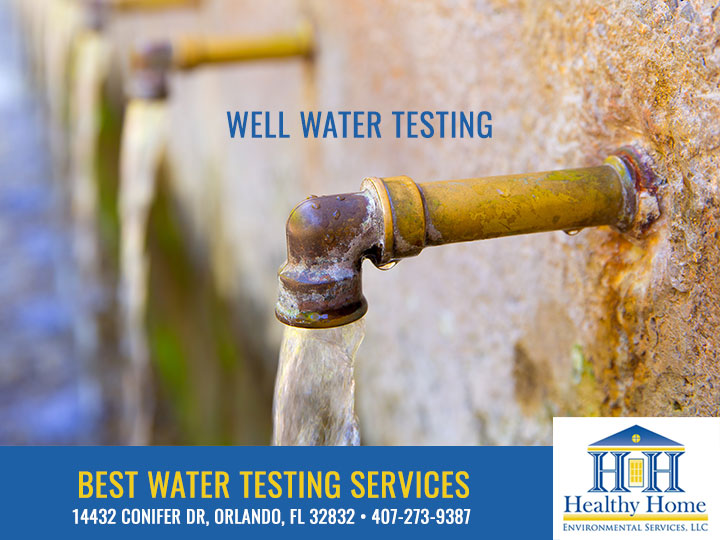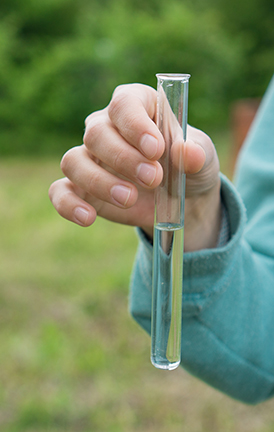Expert Well Water Testing Services: Obtain Accurate Results Rapid
Expert Well Water Testing Services: Obtain Accurate Results Rapid
Blog Article
Discover What Is Consisted Of in Water Evaluating and Exactly How It Makes Sure Safe Drinking Water
Comprehending the details of water testing is essential in making sure the top quality and safety and security of our alcohol consumption water. With a meticulous exam of physical, chemical, and microbiological aspects, water screening identifies possible pollutants that can pose health and wellness risks.
Secret Elements of Water Testing
Water screening is a vital procedure that involves a number of key elements to guarantee the safety and security and quality of alcohol consumption water. One of the main parts is the assessment of physical attributes, including smell, turbidity, and color. These qualities can give initial insights right into the water's problem and potential contamination sources. In addition, guaranteeing the pH equilibrium of water is necessary, as it affects the water's corrosiveness and the effectiveness of sanitation procedures.
Another significant component involves microbiological analysis, where water samples are analyzed for the existence of microorganisms such as microorganisms, infections, and protozoa. If taken in, this evaluation is vital to determine organic hazards that could position health and wellness threats. Chemical analyses are performed to detect natural and inorganic materials, such as hefty steels, nitrates, and chemicals, that may be present in the water supply.

Finding Harmful Impurities
Discovering harmful pollutants in alcohol consumption water is an essential aspect of securing public wellness. This process includes recognizing prospective dangers that can compromise the quality and security of water supplies. Pollutants can range from bacteria such as microorganisms, infections, and protozoa, to inorganic substances like lead, arsenic, and nitrates, along with organic contaminants consisting of chemicals and commercial chemicals. Each type of impurity poses unique health and wellness threats, making their discovery vital to ensure the water consumed by the public is secure.
Water screening for pollutants is commonly performed by governing firms and water energies, using a mix of area tasting and lab analysis. These evaluations are developed to detect both normally occurring substances and anthropogenic toxins that might have gone into the water via farming overflow, industrial discharge, or aging infrastructure. Normal surveillance is crucial, as contamination degrees can vary because of environmental changes, seasonal variants, or human tasks.
The identification of hazardous contaminants educates necessary activities, such as water therapy interventions or public advisories, to reduce risks. Early discovery is important to stop unfavorable wellness impacts, ranging from stomach health problems to long-lasting problems like cancer, thereby ensuring the continued safety and security of drinking water.

Chemical Analysis Techniques
In the realm of guaranteeing safe alcohol consumption water, chemical evaluation methods play a pivotal role in recognizing and quantifying pollutants. These approaches are necessary for discovering a wide variety of chemical materials, including heavy metals, chemicals, and industrial contaminants, which can posture significant health and wellness risks. Methods such as atomic absorption spectroscopy (AAS) and inductively paired plasma mass spectrometry (ICP-MS) are typically utilized to gauge trace levels of metals like arsenic, lead, and mercury. These tools offer specific quantification, helping with compliance with governing standards.
Gas chromatography-mass spectrometry (GC-MS) is an additional crucial technique, particularly for organic substances. It divides complicated mixes and identifies semi-volatile and volatile organic substances, guaranteeing that toxins like benzene and toluene are within safe limitations. High-performance liquid chromatography (HPLC) is similarly made use of for non-volatile materials, consisting of specific chemicals and pharmaceuticals.
Ion chromatography is employed to identify concentrations of anions and cations, such as nitrates and sulfates, which are pivotal in assessing water quality. These chemical evaluation methods collectively guarantee that drinking water continues to be secure by identifying inconsistencies from developed pureness norms, therefore guarding public health and wellness. Making sure precision and precision in these tests is paramount to preserving the integrity of water safety and security evaluations.
Microbiological Evaluating Approaches
Precise microbiological testing is critical for guarding public health and wellness by ensuring that drinking water is without hazardous pathogens. This procedure includes detecting and enumerating microbes such as germs, infections, and protozoa that may infect water supplies. Usual pathogens consist of Escherichia coli, Giardia, and Cryptosporidium, each posing substantial wellness dangers.
Numerous methods are utilized in microbiological screening to determine these dangers. The membrane filtering technique is often made use of, involving water travelling through a filter that records bacteria, which are then cultured to identify their visibility and focus. Alternatively, the multiple-tube fermentation technique makes it possible for the quantification of coliform germs utilizing a collection of dilution and incubation steps.
Innovations in innovation have presented molecular techniques such as polymerase domino effect (PCR), which enables the rapid and extremely certain detection of microorganisms by enhancing their genetic material. Enzyme-linked immunosorbent assays (ELISA) likewise use an approach to detect pathogens by identifying particular healthy proteins or antigens.
These differed approaches are essential for extensive water quality assessment, making sure that water therapy procedures are reliable and that distribution systems maintain safety. By employing these microbiological testing methods, potential carcinogen can be determined and minimized without delay.

Importance for Public Health
Making certain the microbiological safety and security of alcohol consumption water directly impacts public health by preventing the spread of waterborne conditions. Microorganisms such as bacteria, infections, and protozoa can bring about health problems like cholera, dysentery, and intestinal infections (Water Testing Services Near Me). The application of extensive water testing methods is vital in identifying and alleviating these dangers, hence securing areas from possible outbreaks
Normal water testing not just spots microbial impurities but additionally evaluates chemical and physical criteria that might influence health. Excessive levels of nitrates or hefty steels such as lead can position severe health risks, especially to at risk populations like babies and pregnant women. By determining these threats early, water testing enables timely treatments, ensuring the water system stays within safe consumption requirements.
In addition, water testing plays a critical role in maintaining public confidence in local water systems. It provides transparency and accountability, comforting the public that their health and wellness is a concern. For plan manufacturers and health officials, the data originated from water testing informs decisions on infrastructure investments and public health methods, making certain sources are routed where they are most required. By doing this, water screening is crucial in advertising a much healthier, much safer culture.
Verdict
Water screening works as an important mechanism for ensuring the security and top quality of drinking water with detailed examination of its physical, chemical, and microbiological properties. By detecting Water Tesing Services Tampa unsafe pollutants, such as heavy steels and chemicals, and utilizing innovative methods like chromatography and spectrometry, water testing promotes the identification of possible health and wellness risks. The execution of extensive screening methods is important for keeping compliance with safety and security requirements, inevitably securing public health and strengthening confidence in local water systems.

By identifying these risks early, water testing allows prompt treatments, ensuring the water supply remains within risk-free usage requirements.
Water screening offers as a crucial mechanism for ensuring the safety and high quality of alcohol consumption water through thorough assessment of its physical, chemical, and microbiological homes.
Report this page